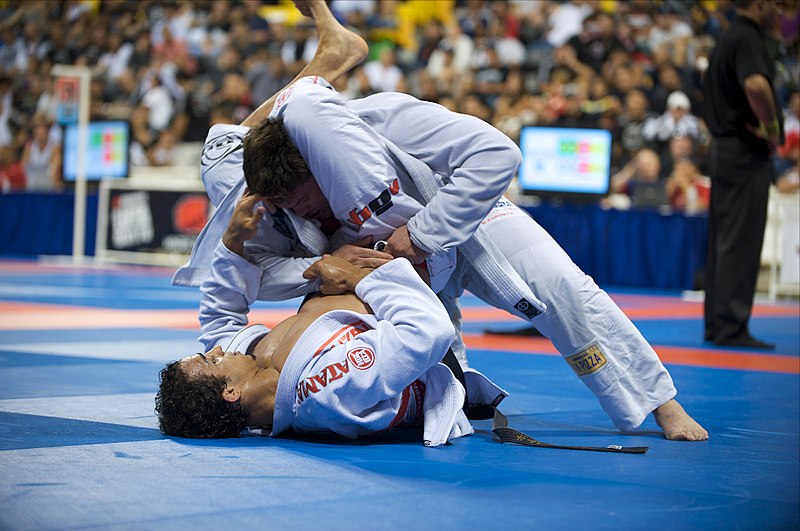When you think of martial arts, you might likely imagine an almost comical scene of Bruce Lee annihilating opponents with a flurry of kicks while releasing strange squawking noises. Martial arts have been surrounded by various stereotypes that have spawned from its misrepresentation in popular culture. Despite its popularity in entertainment and media, martial arts is often unfortunately portrayed in an unserious manner. As somebody who has trained in martial arts for a lifetime, I hope that my words are enough to show that martial arts are not solely used to inflict harm on others.
All forms of martial arts are unique, with different origins, historical usage, and methods of training today. Despite this, martial arts can be sorted into two categories based on the goals of their techniques: striking and grappling.
Striking martial arts focus on hand to hand combat between two opponents. Some examples are boxing, kickboxing, muay thai, karate, and taekwondo. These martial arts are better known due to their arguably higher entertainment value. Martial artists in action movies like Bruce Lee and Chuck Norris are usually seen beating up their opponents with punches, kicks, and occasionally knee strikes. Meanwhile, in televised broadcasts of martial arts fights, striking martial arts are seen as more entertaining due to them being conceptually clear. One opponent hits the other and people cheer at the violence ensuing. Despite the destructive description that was provided, striking martial arts have various physical and spiritual benefits which is occasionally shared with the other most well known category of martial arts: grappling.
Grappling martial arts do not involve physically attacking an opponent in a theoretical altercation, but controlling the opponent’s body and submitting them to the point that they cannot attack you. Grappling martial arts are notorious for their excellence on the ground, where most of the action happens.
Despite favoring fighting on the ground, grappling is still useful while standing up. In a real battle, both opponents will be standing before engaging with each other. With grapplers being at their strongest on the ground, all grappling martial artists have a wide assortment of takedown methods to get their opponent into the advantageous position on the floor. Some well known forms of grappling are the different styles of wrestling, brazilian jiu jitsu, and judo. In competition, grappling is a chess match of defending takedowns while simultaneously trying to take down the opponent.
Competitors in the grappling martial arts usually achieve victory through achieving points. Some ways to earn points are successfully achieving a takedown or a throw, successfully defending a takedown, getting into an advantageous position, or escaping from an opponent’s advantageous position.
Grapplers are well known for their endurance and technical skill. Grappling martial arts are an excellent choice for all ages due to its intent to defuse a fight, without causing genuine harm to an opponent, and because of its focus on technical skill rather than strength. With the two categories of martial arts being distinguished from one another, we can take a deeper look at the most popular martial arts today with their individual applications and benefits.
Boxing
Boxing seems to be the most simple of all martial arts, attacking and defending against an opponent only using one’s hands. However, boxing ends up being one of the most complicated martial arts to master, with a multitude of elements to learn to become a successful boxer.
Boxing’s origins can be traced back to the first Olympic games in ancient Greece, in which opponents actually fought each other without any sort of padding on their hands. Bare knuckle boxing still exists today where competitors only wrap tape around their wrists for the sake of stability and preventing injuries to themselves when throwing and landing punches.
Boxing has multiple aspects that make it such an effective martial art for competition and self defense. Different styles of boxing from different parts of the world put an emphasis on specific elements. These elements are seen in the footwork, defense, and offensive striking of a boxer. Before detailing actual strikes, it is good to learn the proper stance of an offensive boxer.
There are two stances that are related to the preferred style that a boxer may choose to fight. Conceptually, the boxing stance follows criteria that is almost universal in all other striking martial arts like Karate, Kickboxing, and Muay Thai.
The boxing stance sees the fighter with their hands up in front of their face for defense with enough space for the boxer to comfortably see. The boxer’s chin is slightly tucked in behind his hands to brace for any oncoming punches that go through their defense. A boxer’s legs are bent slightly and are about shoulder width apart, with one leg in front of the other. The back foot is notably angled at 45 degrees for balance and mobility. A mobile boxer is an effective one, so it is strategic to stand slightly on your toes.
A boxer’s placement of their hands and legs depend on their hand preference or dominance. A right handed fighter will fight in standard orthodox, with their left foot forwards, right foot behind, and their hands set up in the same order. A left handed boxer fights in a stance called southpaw. The stance is similar to orthodox, but with the right foot and right hand forward, this time.
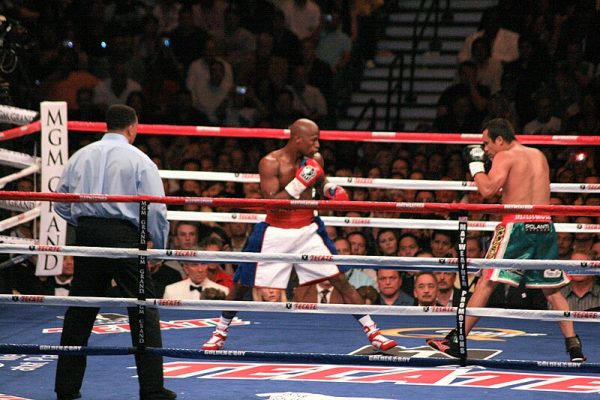
With a strong foundation established in a proper stance, we can now look into what boxing is most well known for: punches. Boxing is almost essential to every competitive striker, seeing how the punches in boxing are effective in competitions for other striking martial arts.
The first punch that most boxers learn is the most important punch of them all. The jab is a quick and simple straight punch that is fired from the lead hand of the fighter. The jab is extremely effective due to its ability to be used offensively and defensively. The jab is used as a setup move that opens opportunities for stronger attacks since it distracts opponents rather than harming them. Some other ways that the jab is used is to manage an opponent’s distance or occasionally earning a skilled fighter a knockout. Without the jab, boxers would have a difficult time setting up the other, stronger punches in boxing.
One of the stronger punches is the cross. The cross is a straight punch that is fired from the dominant arm of a fighter, the arm that is behind. The cross is usually used in conjunction with the jab in combinations and is usually aimed at the head and body of the opponent. While the punch is being thrown, A boxer should shift their hips and back foot with the momentum of their cross so more power is generated in the attack.
The last types of punches used in boxing are the hook and the uppercut, looping punches that can be fired from either hand. Like the cross, the hook and the uppercut are usually used in tandem with the jab. The hook and uppercut are looping punches, with the hook coming around from the sides and the uppercut coming from below. These are the strongest punches that a boxer can learn.
People get into martial arts with drastically different goals in mind. Whether it be to learn a form of self defense or to get into shape, boxing is a martial art that any average person can invest themselves in as a side hobby. From a casual perspective, boxing is one of the most cardio intensive sports. Boxing is one of the most popular martial arts in the world and the most popular striking martial art. Despite this, it does not overshadow other striking martial arts, with kickboxing and Muay Thai.
Kickboxing/Muay Thai
Kickboxing and Muay Thai are nearly identical to each other, with kickboxing apparently being the “improved” version of Muay Thai. These two martial arts utilize all of the fundamentals of boxing as a base, combining its adaptable nature with the addition of new strikes like kicks.
Muay Thai or Thai boxing originated in Thailand in the 13th century. In the past, Muay Thai was taught to the soldiers of the Sukhothai kingdom and was known as the “art of eight limbs,” notable for its usage of knees and elbow strikes. Muay Thai lingered for long enough to be seen as an incredibly common and beloved sport to be observed and practiced in Thailand. Muay Thai practitioners are very well known for their resilience, durability, and overall power.
Muay Thai is incredibly popular in its homeland. It is common for people in Thailand to devote their entire lives to competing in Muay Thai competitions. Muay Thai is also seeing an incredible upsurge in popularity in the United States due to its effectiveness in mixed martial arts competitions.
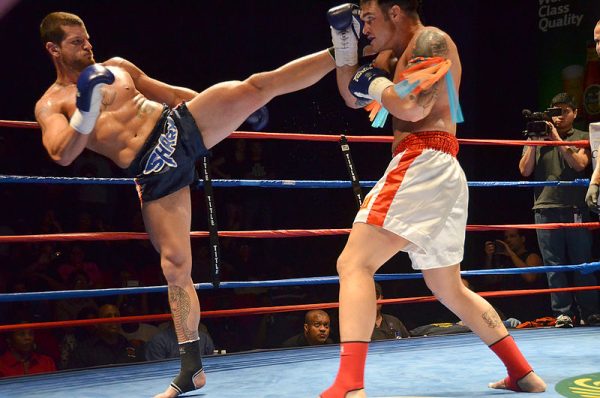
Kickboxing originates from Japan. A fairly recent martial art, Kickboxing is seen as an improved Muay Thai. Kickboxing incorporates multiple elements from another very well known Japanese martial art, Karate. While Muay Thai has a very heavy emphasis on powerful attacks, kickboxing focuses on technique, speed, and accuracy.
Kickboxing and Muay Thai combine the offensive striking fundamentals of boxing while also adding new strikes in the form of kicks, knees, and in the case of Muay Thai, elbows. In competition, Muay Thai fighters are notorious for using their elbows like short-range blades in tandem with their powerful kicks and strong punches. The choice to train either Kickboxing or Muay Thai mostly comes down to individual preference, although Muay Thai conditioning exercises are more challenging.
It is notable to consider that the kicks in both of these martial arts follow the same respective formula and goal in mind, albeit with different executions. Kickboxing and Muay Thai are practiced in the boxing stance that I described earlier in the article. The only difference is observed in Muay Thai, with the forward foot usually being raised onto its toes to generate more power.
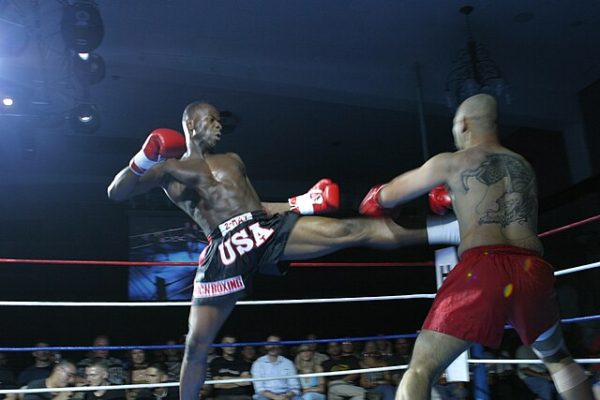
With this small difference aside, Kickboxing and Muay Thai kicks utilize parts of the legs to target similar parts of the body to inflict their damages. Using tough parts of the leg like the shin, Kickboxers and Thai boxers can choose a wide selection of targets to inflict their damage on their opponents. Kicks to the legs hinder their movement, aiming for the body interrupts their breathing, and a well placed kick to the head can guarantee that they are stopped in their tracks. The kicking in these two martial arts are incredibly difficult, but very versatile, making them other popular choices for individuals looking to train in striking.
Jiu Jitsu/Wrestling
Jiu Jitsu originates from Japan with the name meaning “the gentle art.” Jiu Jitsu was taught to the samurai in feudal Japan alongside Judo and Karate. Despite its origin, Jiu Jitsu is more often associated with Brazil. The legendary Gracie family would revolutionize the art of Jiu Jitsu, giving birth to the now widespread Brazilian Jiu Jitsu. Brazilian Jiu Jitsu is the form of the martial art that is most commonly practiced today and is a martial art that stays true to its nonviolent philosophy.
Jiu Jitsu revolves around the idea of being able to control your opponent on the ground through good technique, not brute force. It also revolves around gaining a dominant position on the ground before ending the situation by forcing their opponents into submission through the usage of chokeholds and joint-locks.
In Jiu Jitsu, a competitor can instantly achieve victory with a submission that causes an opponent to tap. By tapping the ground or an opponent that has them in a submission three times, a competitor forfeits for their own safety. This is where the term “tapping out” comes from. Submissions cause taps through methods of choking an opponent or cranking one of their appendages as if to break it.
Tapping Out is incredibly important because despite it resulting in an immediate loss for the tapper, it is usually done for their own safety. Competitors that either forget or refuse to tap usually end up breaking a body part or passing out due to a lack of oxygen from being choked (which still results in a victory for the one who is submitting their competition).
Wrestling is most definitely the more violent counterpart to Jiu Jitsu, in which strength plays a major factor in competition. Wrestling is a combat sport that is actually offered at our school and is similar to Jiu Jitsu in its objective: obtain a dominant position to score points. Wrestling differs in its violent takedowns and throws in comparison to Jiu Jitsu’s slower pace.
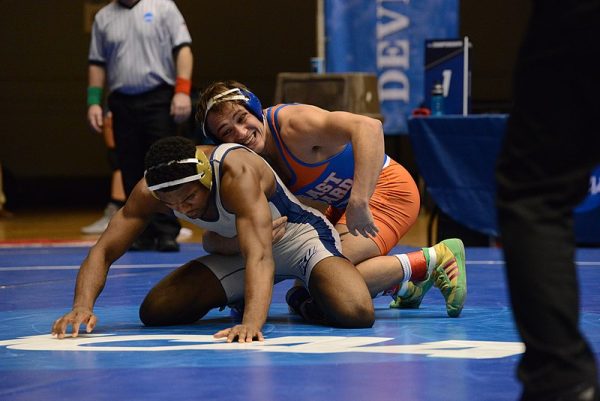
The Benefits
The martial arts centered around striking techniques are incredibly demanding. The precise and intense nature of striking techniques turn out to be great exercise, benefiting an individual’s body in a multitude of ways.
Individuals who train in striking develop incredible cardiovascular systems through the multiple conditioning exercises related to the fundamentals of these martial arts. High intensity training in short intervals are exactly what these conditioning exercises are, with some examples being sprints, skipping a jump rope, along with multiple punching drills on a punching bag in which an individual unleashes a flurry of techniques in a set amount of time. This is for the sake of improving speed. These intense repetitions are what will help the heart become stronger and allow for it to pump more oxygen.
These exercises are with the purpose of improving techniques essential for martial arts. Skipping a jump rope at high speeds is used as a conditioning exercise in almost all combat sports, seeing its effectiveness in improving the defensive footwork of boxers but is also used to stimulate the rhythm of an actual fight. Sparring, or fighting with a partner while minimizing hard contact is used to practice technique and also stimulates a fight. Sparring is a fun and incredibly effective learning device in all striking martial arts because it allows one to see what techniques work in certain situations and what techniques do not.
Another notable benefit of training striking martial arts is its ability to assist in weight loss. Studies by the CDC and Xplor Recreation showed that for an individual that is 150 pounds, an hour of the conditioning associated with kickboxing, Muay Thai, and Boxing can burn up to 500 calories and build muscle. With such significant aerobic benefits, picking up one of the striking martial arts is an outstanding alternative for somebody who is trying to get into shape.
As for the benefits of grappling, the practitioners of grappling martial arts are said to develop a sense of body awareness, improved flexibility, and increased overall aerobic conditioning including cardio and musculature. Additionally, the disciplined nature of most martial arts due only brews mutual respect generated within their community contributes to a supportive and encouraging environment. Jiu-Jitsu and wrestling, with their emphasis on technique and leverage are a great place for anybody to start without any martial arts experience at all.
Training martial arts is difficult. The challenges that martial arts offer in their training are not only physically strenuous, but also mentally testing. Because of this aspect, martial arts can also have benefits on somebody’s mental health.
Training in martial arts can improve confidence due to the physical improvements they provide along with gaining the ability to defend themselves. Martial arts can also teach individuals discipline and self control. Despite the seemingly violent nature of martial arts, most of them heavily emphasize the self control behind the techniques. The ideas behind when martial arts are used are incredibly strict, with a major focus on only using them in certain situations. Whether it is for self defense, sparring, or competitions, it is taught that martial arts should not be used for harmful purposes.
It is likely that both the physical and mental benefits of martial arts play a part in its rising popularity. Despite the difficult training, individuals of all ages are beginning their journey in multiple martial arts. Although it is likely that these individuals start their journeys with the goal of obtaining physical benefits such as learning self defense and gaining a stronger body, they would be pleasantly surprised by many of the hidden mental benefits. Why don’t you challenge yourself and begin your journey as well?
It is likely that both the physical and mental benefits of martial arts play a part in its rising popularity. Despite the difficult training, individuals of all ages are beginning their journey in multiple martial arts.

